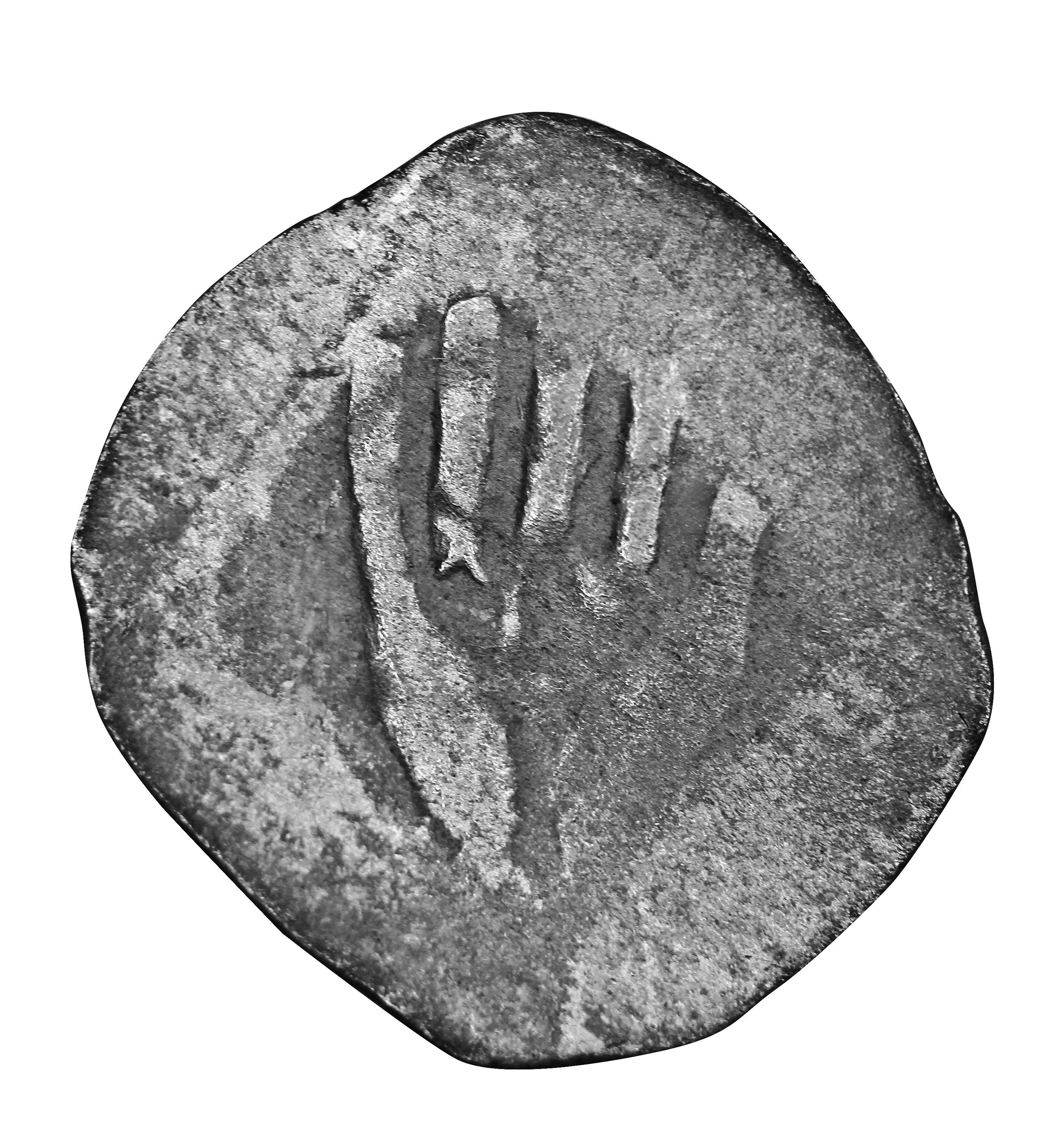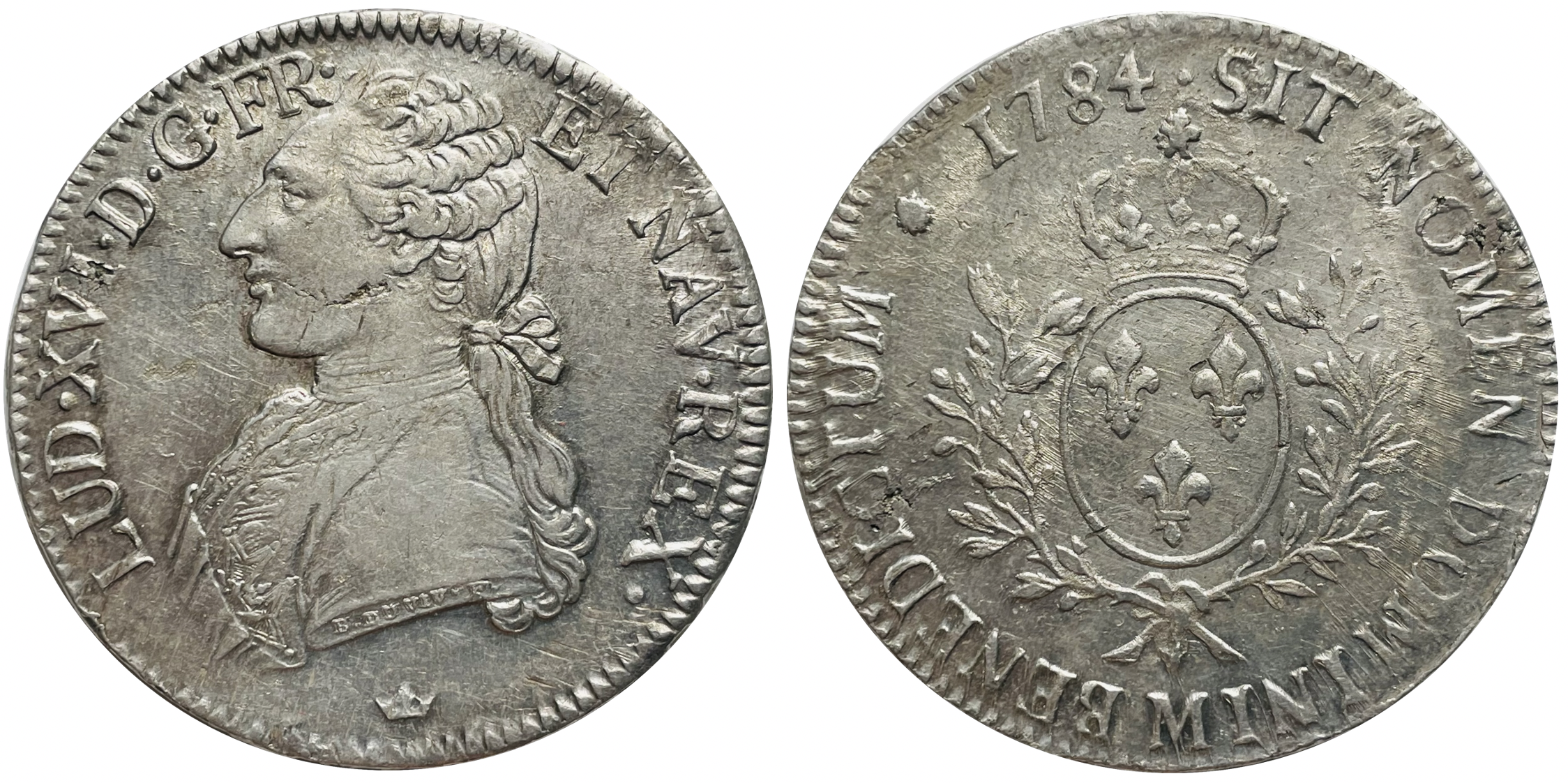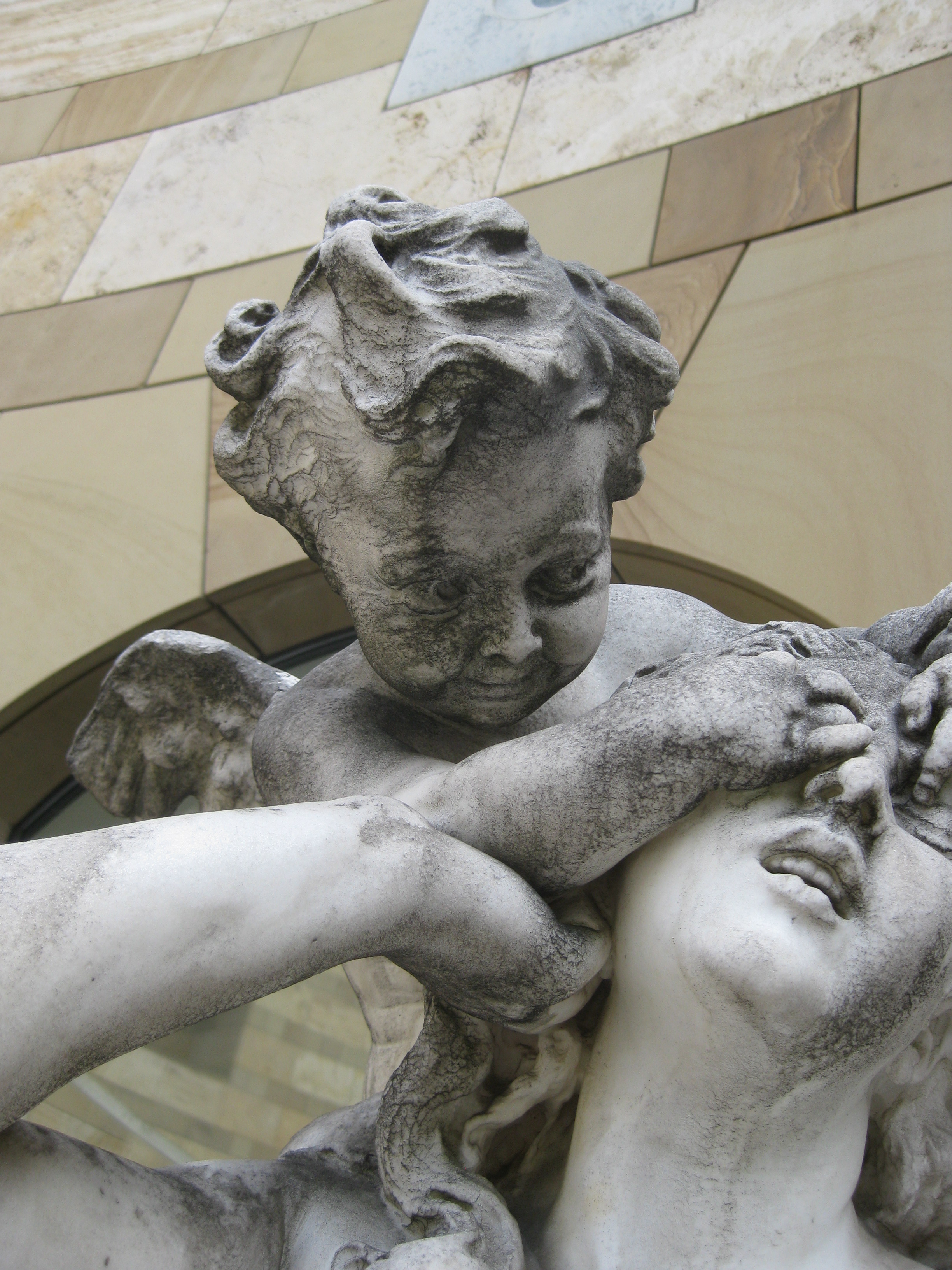|
Scherf (coin)
A ''Scherf'' (also ''Schärff'' or ''scharfer Pfennig'' = "sharp ''pfennig''") was a low-value silver coin used in Erfurt and other cities of the Holy Roman Empire from the Middle Ages to the 18th century. The name was later also given to a copper coin with a value of about half a ''pfennig''. The simple ''scherf'' was only rarely minted; coins of 3, 6 and 12 scherf were more common, most recently in 1777 in Lüneburg. Name The Old High German name ''Scherf'' and Middle High German ''scerpf'', ''scherpf, scherff'', or ''scherf'' are probably related to the Middle High German words ''scherben'' and ''scharben'' which mean "to cut in" and are therefore associated with ''Scherbe'', "shard" or "fragment". These silver pennies had predetermined breaking points so that they could be physically divided into smaller values which, after being broken off, became "shards". If necessary, a 1-''pfennig'' piece could simply be divided into two halves, hence the naming ''Helbing, Hälbling ... [...More Info...] [...Related Items...] OR: [Wikipedia] [Google] [Baidu] |
1245 Scherf
1 (one, unit, unity) is a number representing a single or the only entity. 1 is also a numerical digit and represents a single unit of counting or measurement. For example, a line segment of ''unit length'' is a line segment of length 1. In conventions of sign where zero is considered neither positive nor negative, 1 is the first and smallest positive integer. It is also sometimes considered the first of the infinite sequence of natural numbers, followed by 2, although by other definitions 1 is the second natural number, following 0. The fundamental mathematical property of 1 is to be a multiplicative identity, meaning that any number multiplied by 1 equals the same number. Most if not all properties of 1 can be deduced from this. In advanced mathematics, a multiplicative identity is often denoted 1, even if it is not a number. 1 is by convention not considered a prime number; this was not universally accepted until the mid-20th century. Additionally, 1 ... [...More Info...] [...Related Items...] OR: [Wikipedia] [Google] [Baidu] |
Heller (coin)
The ''Heller'', abbreviation ''hlr'', was a coin, originally valued at half a pfennig, that was issued in Switzerland and states of the Holy Roman Empire, surviving in some European countries until the 20th century. It was first recorded in 1200 or 1208 or, according to Reiner Hausherr as early as 1189. The ''hellers'' were gradually so debased that they were no long silver coins. There were 576 ''hellers'' in a ''Reichsthaler'' ("imperial ''thaler''"). After the Second World War, ''hellers'' only survived in Czechoslovakia and Hungary. The ''heller'' also existed as a silver unit of weight equal to of a Mark (weight), ''Mark''. Name The ''Heller'', also called the Haller or Häller (), in Latin sources: ''denarius hallensis'' or ''hallensis denarius'', took its name from the city of Hall am Kocher (today Schwäbisch Hall). Silver coins stamped on both sides (''Häller Pfennige'') were called ''Händelheller'' because they usually depicted a hand. A distinction was made betwe ... [...More Info...] [...Related Items...] OR: [Wikipedia] [Google] [Baidu] |
Silver Coins
Silver coins are considered the oldest mass-produced form of coinage. Silver has been used as a coinage metal since the times of the Greeks; their silver drachmas were popular trade coins. The ancient Persians used silver coins between 612–330 BC. Before 1797, British pennies were made of silver. As with all collectible coins, many factors determine the value of a silver coin, such as its rarity, demand, condition and the number originally minted. Ancient silver coins coveted by collectors include the Denarius and Miliarense, while more recent collectible silver coins include the Morgan Dollar and the Spanish Milled Dollar. Other than collector's silver coins, silver bullion coins are popular among people who desire a "hedge" against currency inflation or store of value. Silver has an international currency symbol of XAG under ISO 4217. Origins and early development of silver coins The earliest coins in the world were minted in the kingdom of Lydia in Asia Minor around 600 B ... [...More Info...] [...Related Items...] OR: [Wikipedia] [Google] [Baidu] |
Pfennig
The 'pfennig' (; . 'pfennigs' or ; symbol pf or ₰) or penny is a former German coin or note, which was the official currency from the 9th century until the introduction of the euro in 2002. While a valuable coin during the Middle Ages, it lost its value through the years and was the minor coin of the Mark currencies in the German Reich, West and East Germany, and the reunified Germany until the introduction of the euro. Pfennig was also the name of the subunit of the Danzig mark (1922–1923) and the Danzig gulden (1923–1939) in the Free City of Danzig (modern Gdańsk, Poland). Overview Name The word ''Pfennig'' (replacing the ''denarius'' or ''denarius'' as a low-denomination silver coin) can be traced back to the 8th century and also became known as the ''Penning'', ''Panni(n)g '', ''Pfenni(n)c'', ''Pfending'' and by other names, e.g. in Prussia until 1873, ''Pfenning''. The ''-ing''- or ''-inc'' suffix was used, in addition to ''-ung'', the formation of affil ... [...More Info...] [...Related Items...] OR: [Wikipedia] [Google] [Baidu] |
Luther Bible
The Luther Bible (german: Lutherbibel) is a German language Bible translation from Latin sources by Martin Luther. The New Testament was first published in September 1522, and the complete Bible, containing the Old and New Testaments with Apocrypha, in 1534. Luther continued to make improvements to the text until 1545. It was the first full translation of the Bible into German which made use of Greek texts, not just their Latin Vulgate translations. However, the updated 2017 translation of the Luther Bible published by the Evangelical Church in Germany notes that "Luther translated according to the Latin text". Luther did not speak Greek, Hebrew, or Aramaic and relied heavily on other scholars for assistance, particularly Melanchthon. One of the textual bases of the New Testament translation was the Greek version recently published by the Dutch Catholic humanist Erasmus of Rotterdam and called the Novum Instrumentum omne. The project absorbed Luther's later years. Thanks to th ... [...More Info...] [...Related Items...] OR: [Wikipedia] [Google] [Baidu] |
Martin Luther
Martin Luther (; ; 10 November 1483 – 18 February 1546) was a German priest, theologian, author, hymnwriter, and professor, and Order of Saint Augustine, Augustinian friar. He is the seminal figure of the Reformation, Protestant Reformation and the namesake of Lutheranism. Luther was ordained to the Priesthood in the Catholic Church, priesthood in 1507. He came to reject several teachings and practices of the Catholic Church, Roman Catholic Church; in particular, he disputed the view on indulgences. Luther proposed an academic discussion of the practice and efficacy of indulgences in his ''Ninety-five Theses'' of 1517. His refusal to renounce all of his writings at the demand of Pope Leo X in 1520 and the Charles V, Holy Roman Emperor, Holy Roman Emperor Charles V at the Diet of Worms in 1521 resulted in his Excommunication (Catholic Church)#History, excommunication by the pope and condemnation as an Outlaw#In other countries, outlaw by the Holy Roman Emper ... [...More Info...] [...Related Items...] OR: [Wikipedia] [Google] [Baidu] |
Idiom
An idiom is a phrase or expression that typically presents a figurative, non-literal meaning attached to the phrase; but some phrases become figurative idioms while retaining the literal meaning of the phrase. Categorized as formulaic language, an idiom's figurative meaning is different from the literal meaning. Idioms occur frequently in all languages; in English alone there are an estimated twenty-five million idiomatic expressions. Derivations Many idiomatic expressions were meant literally in their original use, but sometimes the attribution of the literal meaning changed and the phrase itself grew away from its original roots—typically leading to a folk etymology. For instance, the phrase "spill the beans" (meaning to reveal a secret) is first attested in 1919, but has been said to originate from an ancient method of voting by depositing beans in jars, which could be spilled, prematurely revealing the results. Other idioms are deliberately figurative. For example, "break ... [...More Info...] [...Related Items...] OR: [Wikipedia] [Google] [Baidu] |
Obolus
The obol ( grc-gre, , ''obolos'', also ὀβελός (''obelós''), ὀβελλός (''obellós''), ὀδελός (''odelós''). "nail, metal spit"; la, obolus) was a form of ancient Greek currency and weight. Currency Obols were used from early times. According to Plutarch they were originally spits of copper or bronze traded by weight, while six obols make a drachma or a handful, since that was as many as the hand could grasp. Heraklides of Pontus (died ca. 310 BC) is cited as having mentioned the obols of Heraion and also gives the etymology of ''obolos'' (the name of the coin) from ''obelos'' (the word for "spit, spike, nail"). Similarly, the historian Ephorus in his equally lost work ''On Inventions'' (mid 4th century BC) is said to have mentioned the obols of Heraion. Excavations at Argos discovered several dozen of these early obols, dated well before 800 BC; they are now displayed at the Numismatic Museum of Athens. Archaeologists today describe the iro ... [...More Info...] [...Related Items...] OR: [Wikipedia] [Google] [Baidu] |
Etymologisches Wörterbuch Der Deutschen Sprache
The ''Etymological Dictionary of the German Language'' (german: Etymologisches Wörterbuch der deutschen Sprache) is a reference book for the history of the German language, and was one of the first books of its kind ever written. Originally written in 1883 by Friedrich Kluge, it is still actively maintained and considered a standard work among the German etymological dictionaries. The most recent publication was released in 2011 in print, eBook and as an Android app. Editions and editors History From the 10th to the 13 editions, between 1924 and 1943, there was a dedication on the flyleaf that read: "To the German people its German dictionary." In the 1980s, criticism grew about the state of the dictionary. It was argued that it had not been maintained with sufficient rigor and was partially outdated. One of the supporting arguments was that the 21st edition (1975) when compared to the previous edition had remained unchanged. As a result of this criticism a new editor for th ... [...More Info...] [...Related Items...] OR: [Wikipedia] [Google] [Baidu] |
Erfurt
Erfurt () is the capital and largest city in the Central German state of Thuringia. It is located in the wide valley of the Gera river (progression: ), in the southern part of the Thuringian Basin, north of the Thuringian Forest. It sits in the middle of an almost straight line of cities consisting of the six largest Thuringian cities forming the central metropolitan corridor of the state, the "Thuringian City Chain" ('' Thüringer Städtekette'') with more than 500,000 inhabitants, stretching from Eisenach in the west, via Gotha, Erfurt, Weimar and Jena, to Gera in the east. Erfurt and the city of Göttingen in southern Lower Saxony are the two cities with more than 100,000 inhabitants closest to the geographic center of Germany. Erfurt is located south-west of Leipzig, north-east of Frankfurt, south-west of Berlin and north of Munich. Erfurt's old town is one of the best preserved medieval city centres in Germany. Tourist attractions include the Merchants' Bridge (''K ... [...More Info...] [...Related Items...] OR: [Wikipedia] [Google] [Baidu] |
Middle High German
Middle High German (MHG; german: Mittelhochdeutsch (Mhd.)) is the term for the form of German spoken in the High Middle Ages. It is conventionally dated between 1050 and 1350, developing from Old High German and into Early New High German. High German is defined as those varieties of German which were affected by the Second Sound Shift; the Middle Low German and Middle Dutch languages spoken to the North and North West, which did not participate in this sound change, are not part of MHG. While there is no ''standard'' MHG, the prestige of the Hohenstaufen court gave rise in the late 12th century to a supra-regional literary language (') based on Swabian, an Alemannic dialect. This historical interpretation is complicated by the tendency of modern editions of MHG texts to use ''normalised'' spellings based on this variety (usually called "Classical MHG"), which make the written language appear more consistent than it actually is in the manuscripts. Scholars are uncertain as to ... [...More Info...] [...Related Items...] OR: [Wikipedia] [Google] [Baidu] |
Old High German
Old High German (OHG; german: Althochdeutsch (Ahd.)) is the earliest stage of the German language, conventionally covering the period from around 750 to 1050. There is no standardised or supra-regional form of German at this period, and Old High German is an umbrella term for the group of continental West Germanic dialects which underwent the set of consonantal changes called the Second Sound Shift. At the start of this period, the main dialect areas belonged to largely independent tribal kingdoms, but by 788 the conquests of Charlemagne had brought all OHG dialect areas into a single polity. The period also saw the development of a stable linguistic border between German and Gallo-Romance, later French. The surviving OHG texts were all written in monastic scriptoria and, as a result, the overwhelming majority of them are religious in nature or, when secular, belong to the Latinate literary culture of Christianity. The earliest written texts in Old High German, glosses and i ... [...More Info...] [...Related Items...] OR: [Wikipedia] [Google] [Baidu] |











.jpg)